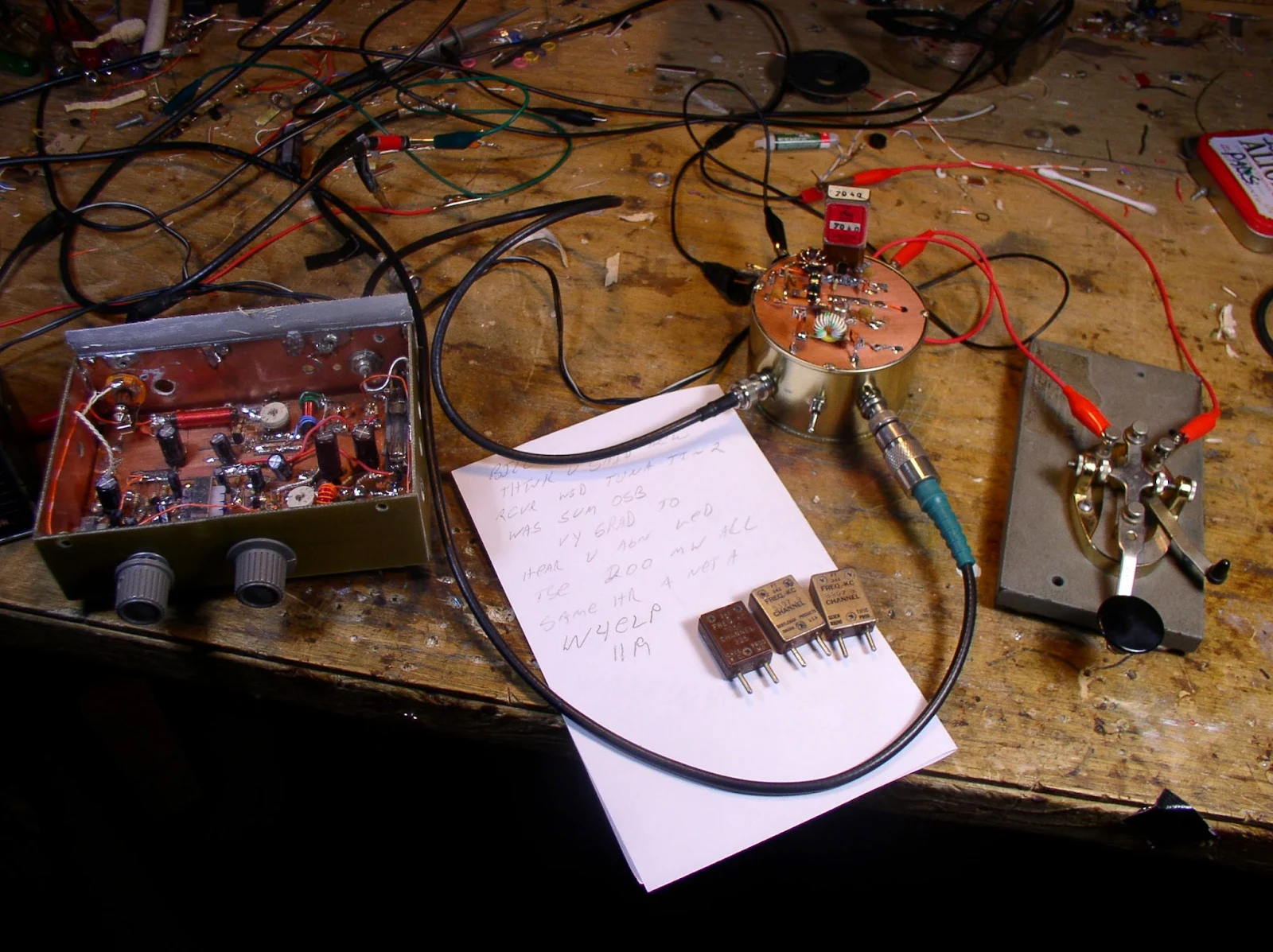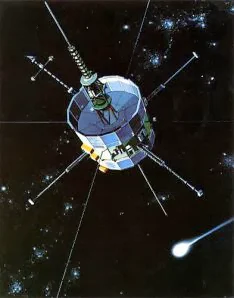Ah, it was a good morning in the N2CQR shack! Last week I ran into fellow ham David Cowhig at work. I was regaling him with tales of Herring Aid and Tuna Tin derring-do. Oh the stations I had heard with the receiver! And the stations that I'd worked with the transmitter! Then David asked the question: "Yea, but have you worked anybody with the receiver paired up with the transmitter?" Uh, no. Not yet.
Well this morning I took care of that. 7040 kc. 1115 UTC. W4ELP was calling CQ. He wasn't too strong, and I wasn't sure if we were on the same side of zero beat (that's what happens with direct conversion -- you get all the sigs in two places on the dial) but I took a shot at it. And he heard me!
Here's the icing on the cake: This was his SECOND QSO with my Tuna Tin 2! Ed had been contact #4 when I was running the TT2 with the Drake 2B. After exchanging reports he asked "Bill ARE YOU STILL ON THE TUNA TIN?"
The rig (TX AND RX) is pictured above. Close-up of the receiver appears below. And below that is a picture of Ed, W4ELP, in his Georgia shack. Note the HW-8.
Thanks Ed! Thanks David!
Our book: "SolderSmoke -- Global Adventures in Wireless Electronics" http://soldersmoke.com/book.htm Our coffee mugs, T-Shirts, bumper stickers: http://www.cafepress.com/SolderSmoke Our Book Store: http://astore.amazon.com/contracross-20





























+Yuck.JPG)





.JPG)






































